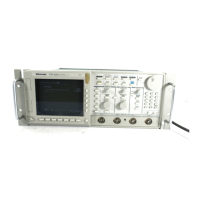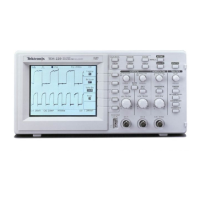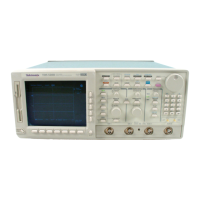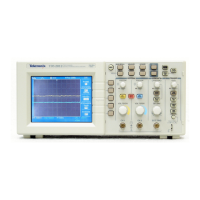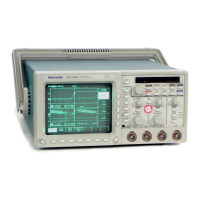Appendix B: Algorithms
TDS 684A, TDS 744A, & TDS 784A User Manual
B–9
Note that this value should never be negative (unless High or Low are set
out-of-range).
Timing measurement. The distance (time) between (default = 50%)
amplitude points of a negative pulse.
If = ‘–’
then
= –
else
= –
Amplitude measurement. The absolute difference between the maximum and
minimum amplitude.
= –
Timing measurement. Time taken for one complete signal cycle. The reciprocal
of frequency. Measured in seconds.
= –
Timing measurement. The amount of phase shift, expressed in degrees of the
target waveform cycle, between the crossings of two different wave-
forms. Waveforms measured should be of the same frequency or one waveform
should be a harmonic of the other.
Phase is a dual waveform measurement; that is, it is measured from a target
waveform to a reference waveform. To get a specific phase measurement, you
must specify the target and reference sources.
Phase is determined in the following manner:
1. The first and third ) in the
source (target) waveform are found.
2. The period of the target waveform is calculated (see Period above).
3. The first in the reference waveform crossing
in the same direction (polarity) as that found for the target
waveform is found.
4. The phase is determined by the following:
Negative Width
Peak to Peak
Period
Phase
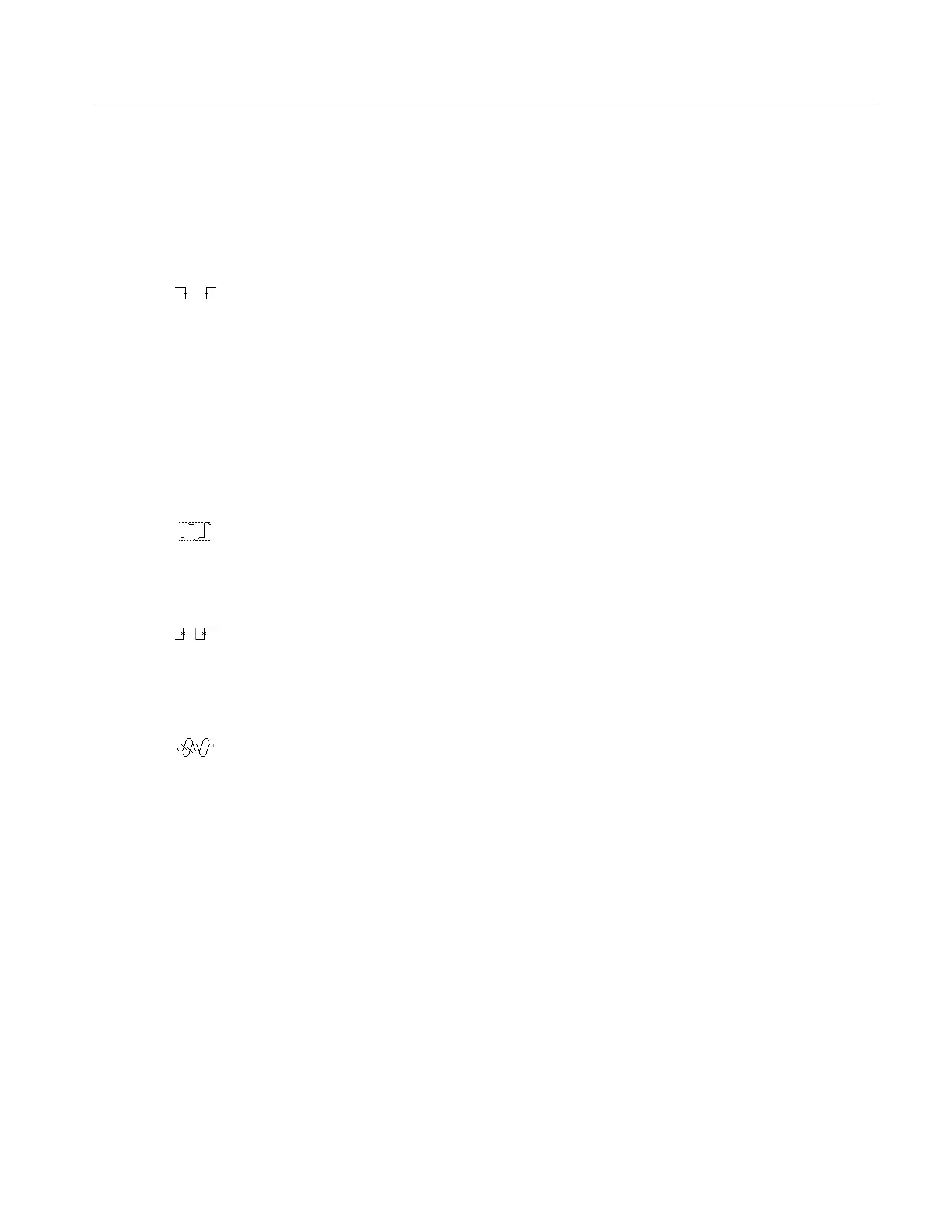